
Super Bowl stadiums of the past, present and future
Since the 52nd Super Bowl is taking place this weekend at a new stadium in Minneapolis, here's a look at some of the other giant venues that have previously hosted, or will host, the NFL's annual American football championship final.
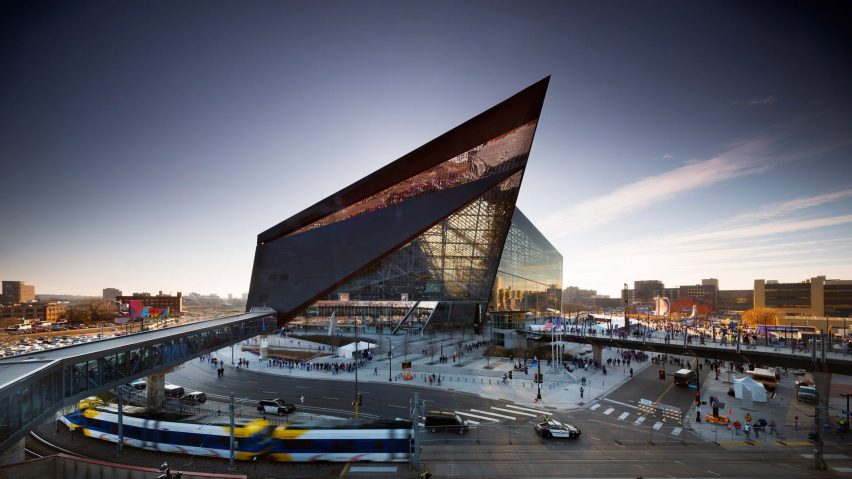
US Bank Stadium by HKS, Minneapolis, Minnesota
Super Bowl LII
This year's Super Bowl will be held at the new home of the Minnesota Vikings, recently completed by international firm HKS, which is behind several stadiums on this list.
The Philadelphia Eagles will play the New England Patriots on 4 February 2018 at the 66,200-seat venue in Minneapolis, which features angular protrusions, zinc cladding and a roof partly made of plastic film.
Find out more about US Bank Stadium ›
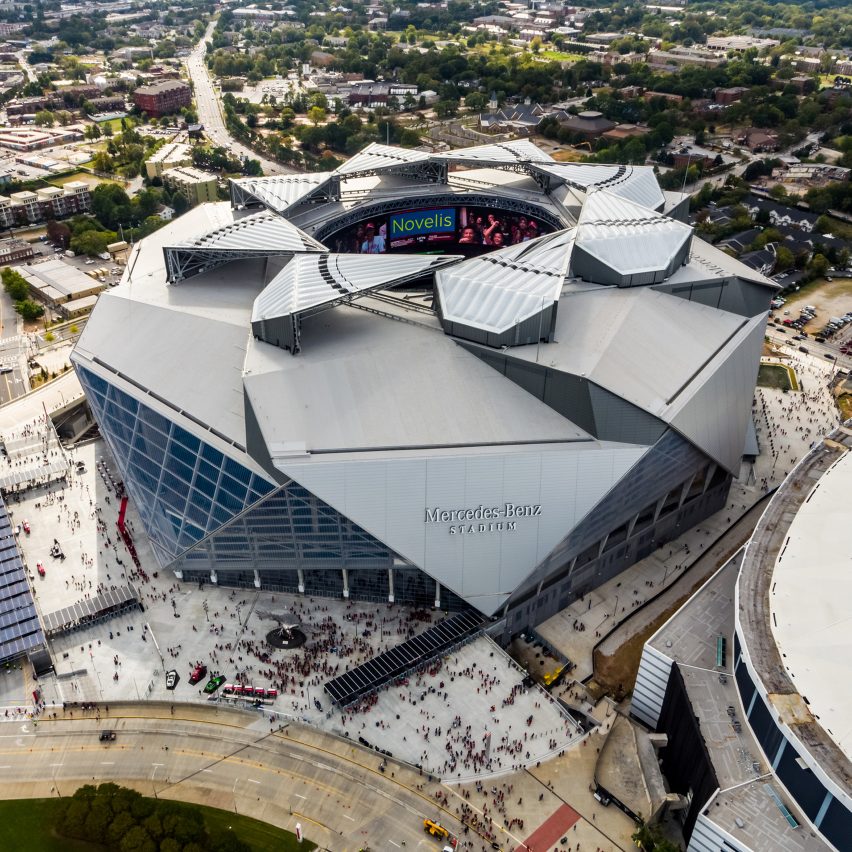
Mercedes-Benz Stadium by HOK, Atlanta, Georgia
Super Bowl LIII
Looking ahead to next year, America's most-watched sporting event will take place at another new stadium: HOK's for the Atlanta Falcons, which features a roof of ETFE plastic "petals" that retract like a camera aperture.
Opened in August 2017, the stadium was built to replace the Georgia Dome, which occupied a site next door before it was demolished in November 2017. The new structure has an exterior made up of giant triangular panels that overlap to surround seating for 71,000 spectators inside.
Find out more about Mercedes-Benz Stadium ›
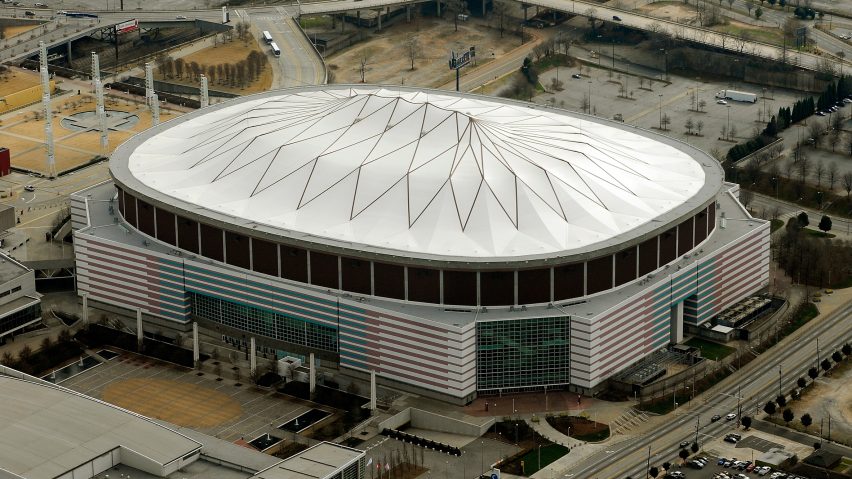
Georgia Dome by Scott W Braley, Atlanta, Georgia
Super Bowls XXVIII and XXXIV
Brought down after 25 years in just 12 seconds, using 240 tonnes of explosives, the Georgia Dome met its fate at the end of last year during a controlled demolition.
Despite hosting two Super Bowls and undergoing extensive renovations, the stadium's distinguishable fabric top proved problematic in inclement weather, so its replacement was designed with a retractable roof.
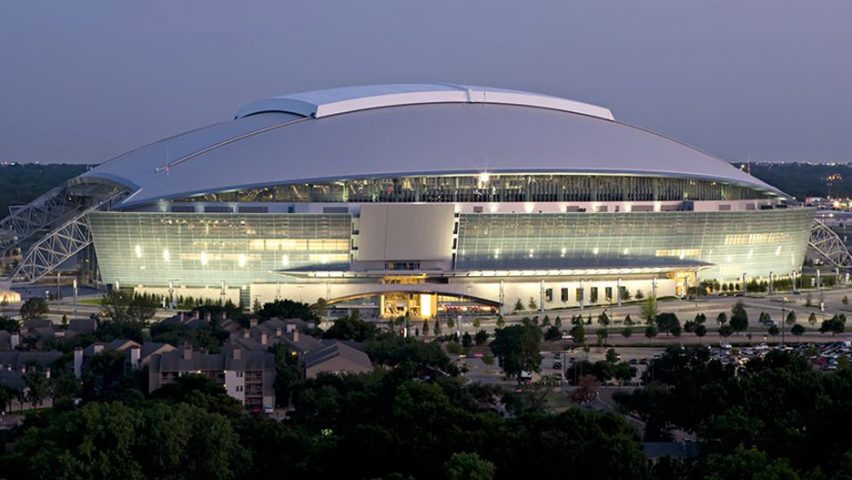
AT&T Stadium by HKS, Arlington, Texas
Super Bowl XLV
The AT&T Stadium, previously known as the Cowboys Stadium, played host to the Super Bowl two years after it completed in 2009.
The building's curved roof is supported by two giant trusses that span end to end, and has operable panels that allow the pitch to be opened to the elements.
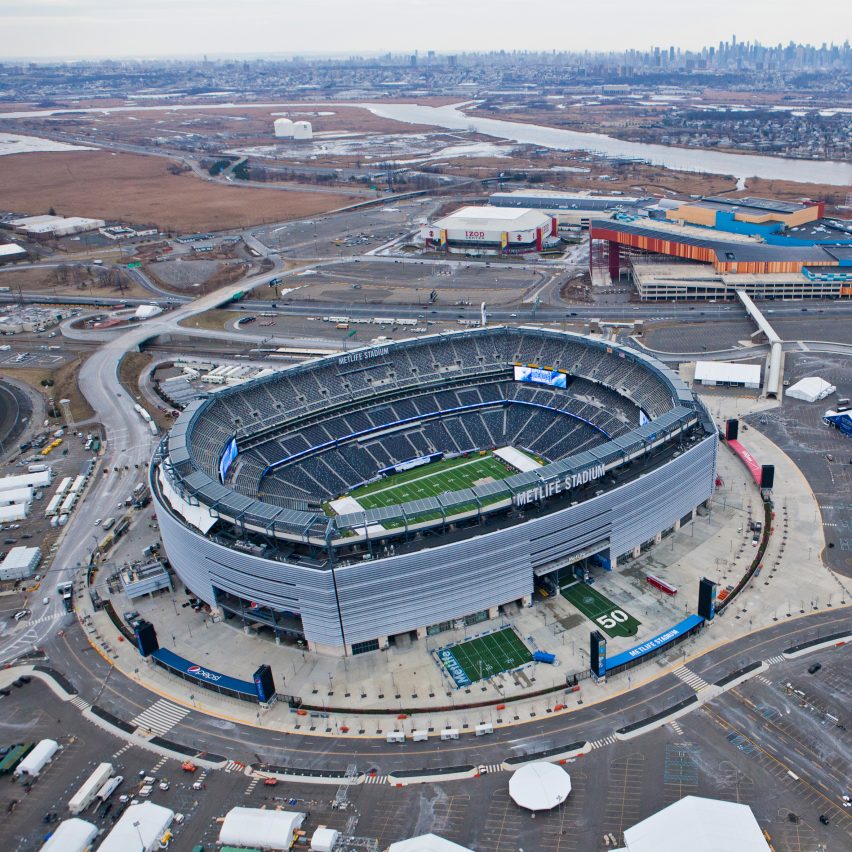
MetLife Stadium by HOK, Bruce Mau, Rockwell Group and EwingCole, East Rutherford, New Jersey
Super Bowl XLVIII
Located in easy reach of New York City, this giant open-air venue can hold up to 82,500 people watching New York Giants and the New York Jets play their home games.
HOK worked with designers Bruce Mau and Rockwell Group to create a variety entertainment spaces throughout the complex, which was completed in 2010 and hosted the Super Bowl in 2014.
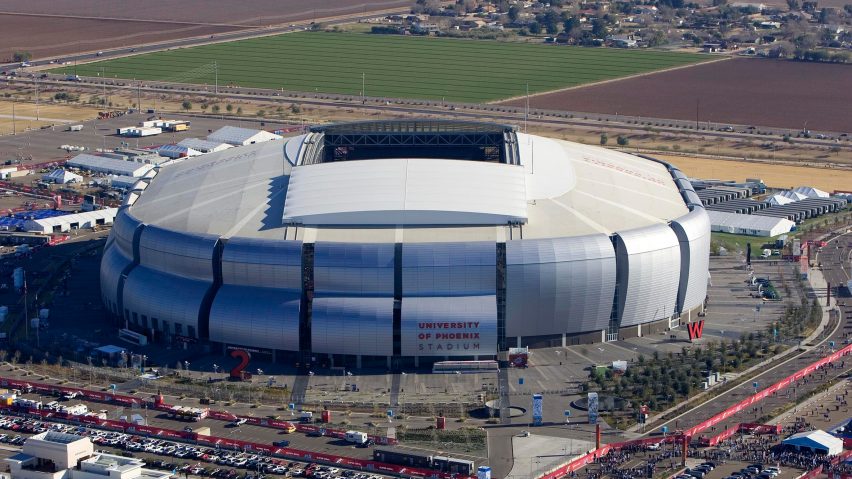
University of Phoenix Stadium by Peter Eisenman and Populous, Glendale, Arizona
Super Bowls XLII and XLIX
Architect Peter Eisenman's first foray into stadium design resulted in this metal-wrapped venue in Arizona, which boats the world's first fully retractable playing field.
Working with stadium specialist Populous, Eisenman chose a set of huge curved panels to enclose the seating and playing field, which shimmer in the desert sun.
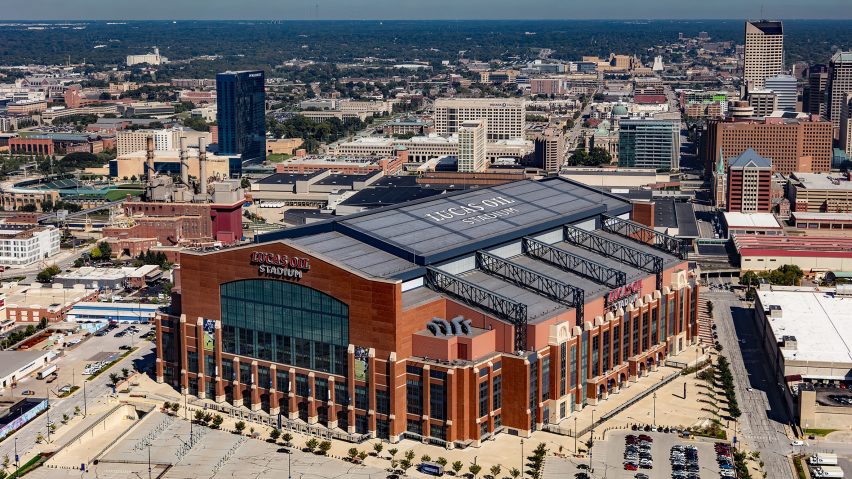
Lucas Oil Stadium by HKS, Indianapolis, Indiana
Super Bowl XLVI
This stadium in Downtown Indianapolis looks more like an oversized factory building that a sports venue, but the Colts have been playing there since it replaced the RCA Dome in 2008.
Its pitched roof slides down sloped tracks, supported by large metal trusses on either side, while external walls are clad in terracotta-coloured panels that add to the industrial aesthetic.
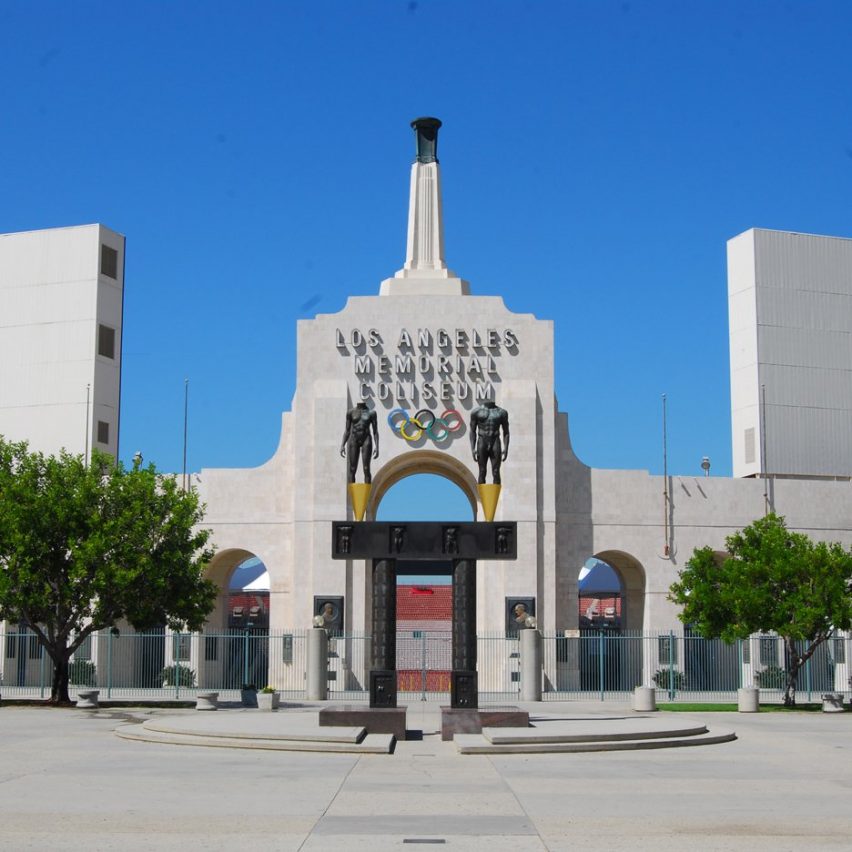
Memorial Coliseum by John and Donald Parkinson, Los Angeles, California
Super Bowls I and VII
Back in 1967, the pastel-toned Memorial Coliseum was the first stadium to host the Super Bowl, and did the honours again for the seventh edition.
Located in LA's University Park, the venue opened in 1923 and has also been used for two Olympic games, with plans for its participation when the city welcomes its third in 2028.
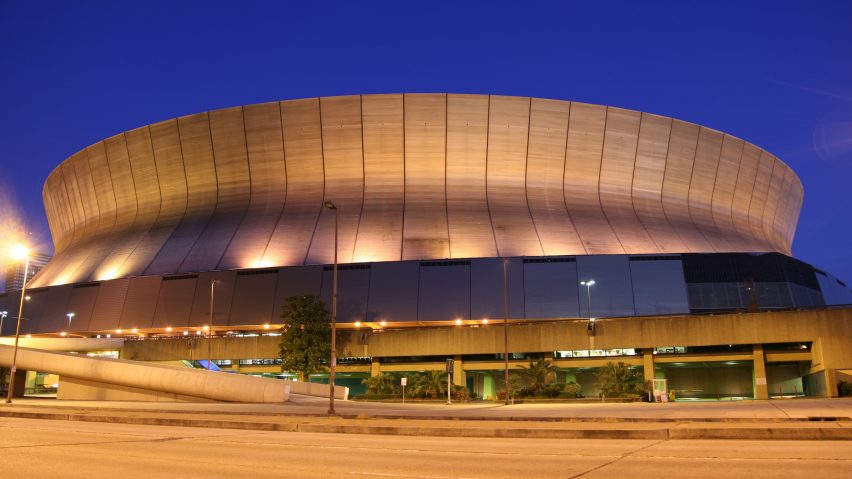
Superdome by Nathaniel C Curtis, New Orleans, Louisiana
Super Bowls XII, XV, XX, XXIV, XXXI, XXXVI, XLVII
New Orleans' Superdome has thrown more Super Bowls than any other stadium, notching up seven championship games so far.
Nathaniel C Curtis' 1975 stadium was also thrust into the spotlight in the wake of Hurricane Katrina in 2005, as thousands made homeless by the storm took shelter under its white domed roof. The building itself suffered major damage during Katrina, and underwent refurbishment before reopening the following year.
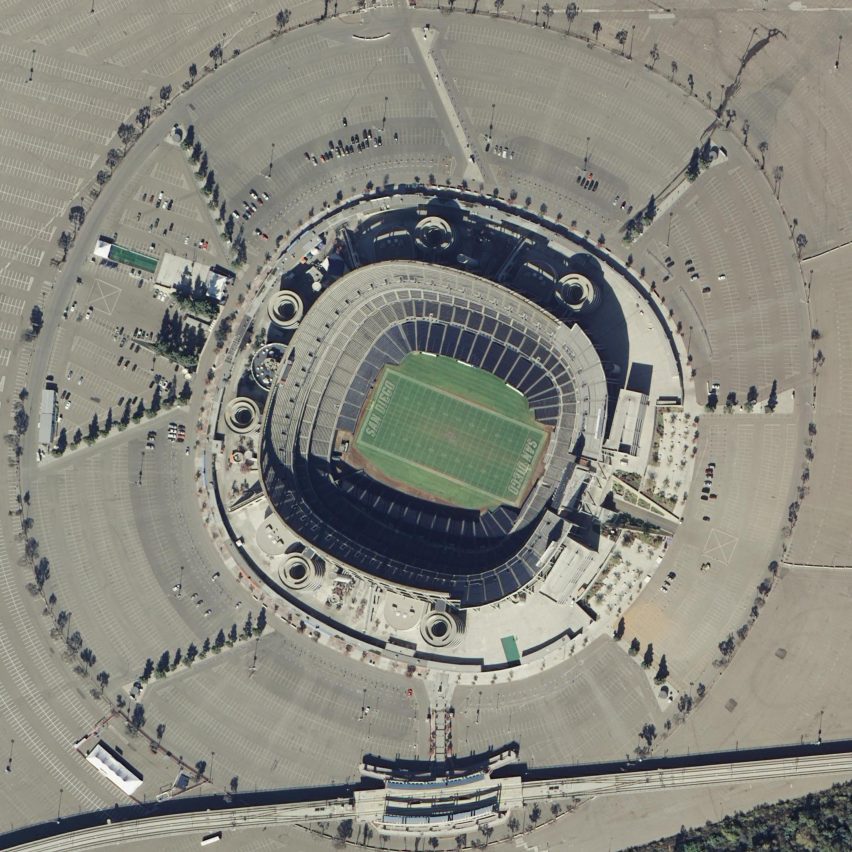
SDCCU Stadium by Gary Allen, San Diego, California
Super Bowls XXII, XXXII, XXXVII
Recently renamed from Qualcomm Stadium after rights expired, the roofless SDCCU Stadium takes advantage of San Diego's fair weather.
The three-time Super Bowl host venue, completed in 1967, takes the form of a continuous bowl of seating, supported by large concrete column and rings.
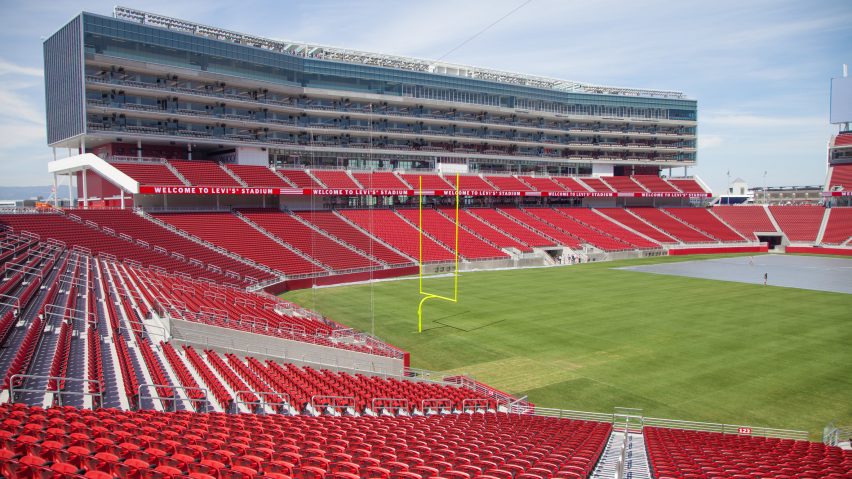
Levi's Stadium by HNTB, Santa Clara, California
Super Bowl L
Also without a roof, the home of the San Francisco 49ers since 2014 is dominated by the team's bright red across its 68,500 seats – two-thirds of which are located in the lower bowl, one of the largest of any NFL stadium.
The venue is also expandable to accommodate 75,000 for events like the Super Bowl, which it hosted in 2016.
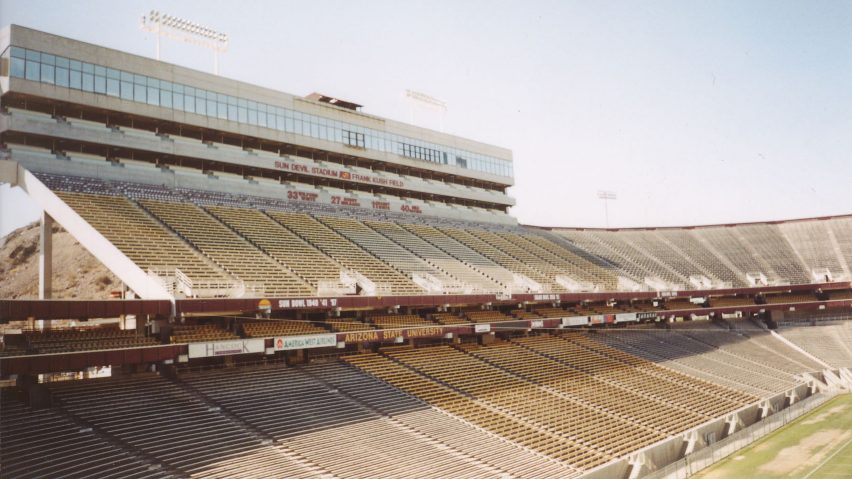
Sun Devil Stadium by Edward L Varney, Tempe, Arizona
Super Bowl XXX
Modernist architect Edward L Varney, who studied under Frank Lloyd Wright and worked in the Phoenix metropolitan area during the mid-20th century, was behind this venue for the Arizona State University campus.
His stadium has changed size multiple times since it was completed in 1958, and is currently undergoing a $256 million renovation that is scheduled to be ready for the 2018 season.
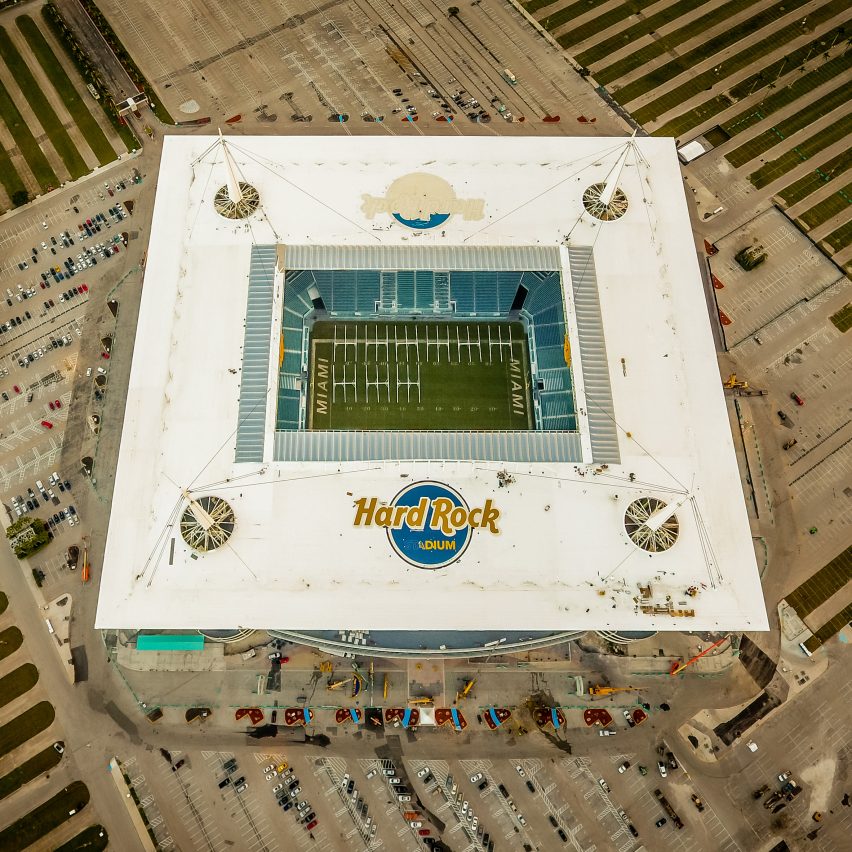
Hard Rock Stadium by Populous and HOK, Miami, Florida
Super Bowls XXIII, XXIX, XXXIII, XLI, LIV
The Miami Dolphins play at this five-time Super Bowl host stadium, which had a vast flat roof added over its stands during upgrades in 2015.
The building's other architectural features include pairs of spiral walkways that connect its various levels at each corner, and huge white spikes that carry the tensile cables holding up the canopy.
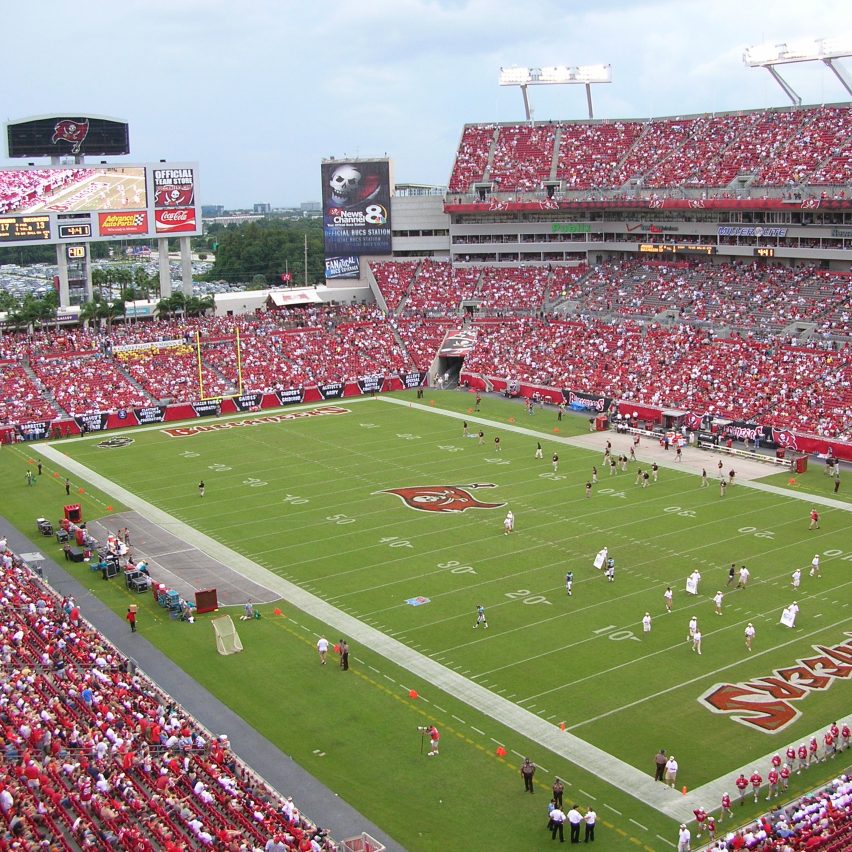
Raymond James Stadium by Wagner Murray Architects and Populous, Tampa, Florida
Super Bowls XXXV, XLIII, LV
With two Super Bowls under its belt and scheduled to host another in three year's time, this open-air stadium is nicknamed Ray Jay and home to the Tampa Buccaneers.
Most notably, it includes a 103-foot (31-metre) replica pirate ship made from steel and concrete, which fires fake cannons each time the Bucs score.
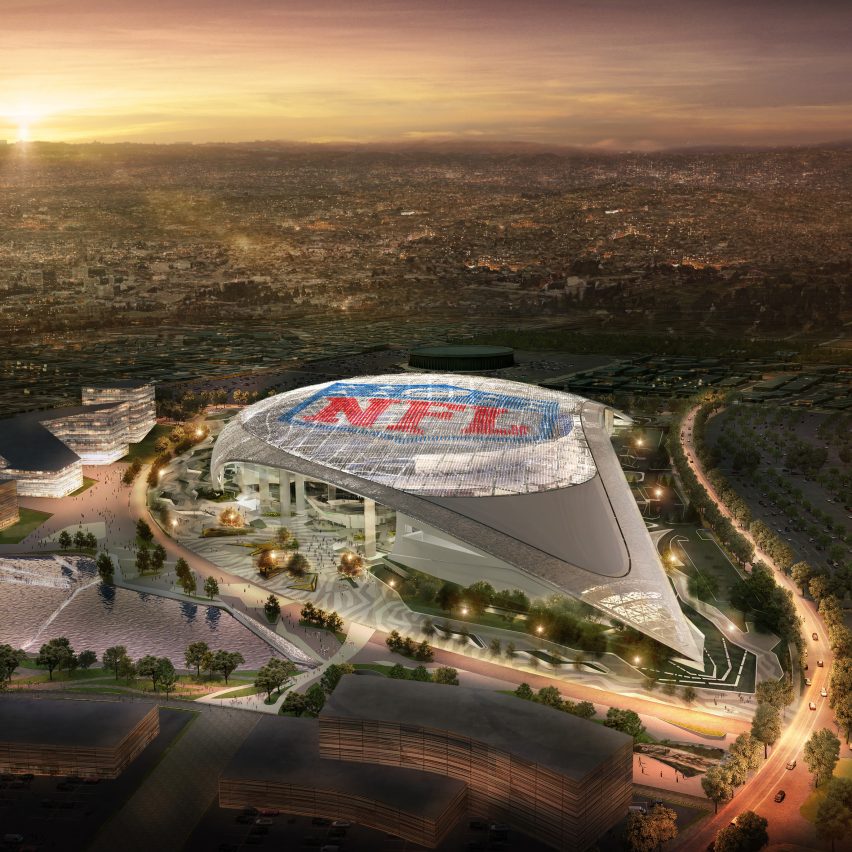
Los Angeles Stadium by HKS, Los Angeles, California
Super Bowl LVI
HKS's new stadium and entertainment complex for LA is still under construction, but the venue has already been awarded the 56th Super Bowl, to take place in 2022.
Located in Inglewood, just east of LAX airport, the structure will feature a giant sculptural roof made of perforated metal and transparent plastic film.
Find out more about Los Angeles Stadium ›